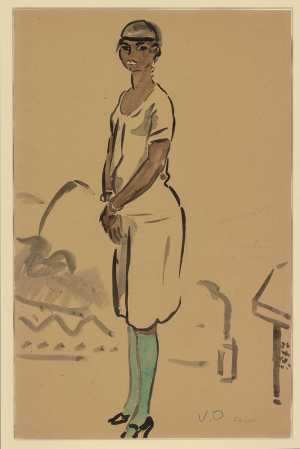Cornelis Theodorus Maria van Dongen was born on 26 January 1877 in Delfshaven, then still a small independent port near Rotterdam. At the age of fifteen, Kees began drawing lessons at what is now the Willem de Kooning Academy in Rotterdam. Three years later he was able to earn a living as a draughtsman and he worked for several newspapers including Het Rotterdamsch Nieuwsblad. In 1897 Van Dongen went to Paris for the first time to continue his training as a draughtsman. Van Dongen blossomed in Paris—the left-wing illustrator became a celebrated artist. His success came through his association with Fauvism, the first major avant-garde movement. Van Dongen was notorious for his contemporary use of colour, paint and electric light—and almost as much for his lifestyle. His lavish studio parties in the 1920s and 30s were attended by film stars, famous politicians and artists. What Andy Warhol was to New York in the 1960s, Kees van Dongen was to the Paris of the 1920s—a society artist and Bohemian who brought added colour and excitement to the city.

Without a time slot you cannot visit the depot
Donors, friends and guests with a privilege pass may book a single or multiple time slots here
Donors, friends and guests with a privilege pass may book a single or multiple time slots here
Join as a Friend
Would you also like to experience more Boijmans or give a friendship as a gift? Join as a Friend and get invited for the annual Museumpark Vriendendag. Will we see you or your friend in the depot soon?


















